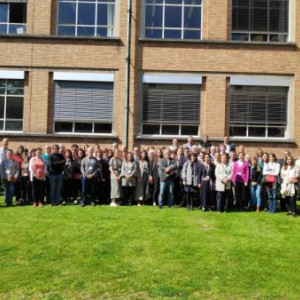 \
&
Contact us
\
&
Contact us
 \
&
Contact us
\
&
Contact us
This was 1 year ago
LocationBrussels
The European Commission and the European Telecommunications Standards Institute (ETSI) organise a workshop to collect feedback on updating the Smart Applications Reference (SAREF) specifications.
The Smart Applications REFerence (SAREF) ontology is a pivotal framework designed to enable interoperability among smart devices within the IoT (Internet of Things) ecosystem. The European Commission has been spearheading and funding SAREF over the last decade. SAREF has also been standardised and further developed by ETSI (European Telecommunications Standards Institute). SAREF provides a standardised language that allows diverse smart devices to communicate and interact seamlessly, ensuring that data can be shared and understood across different platforms. This ontology explicitly specifies core concepts and relationships within the smart applications domain, facilitating meaningful interactions between devices within multiple sectors.
To update the stakeholders on the latest developments in SAREF, collect their feedback and showcase the current usage and potential of SAREF, ETSI and the European Commission are organising the workshop “Enhancing IoT Semantic Interoperability by SAREF for Digital Twins”. This event will bring together industry and academia stakeholders, SAREF users, representatives involved in standardisation efforts, and policy makers to discuss recent developments, implementation, and future directions of the SAREF ontology.
For more information on the event, and to register to participate, please visit the event website. Please note that registration closes on 18 September 2024.
We offer news and event updates, covering all domains and topics of Horizon Europe, Digital Europe & EDF (and occasionally, for ongoing projects, Horizon 2020).
Stay informed about what matters to you.
By signing up, you can opt in for e-mail notifications and get access to
a personalised dashboard that groups all news updates and event announcements in your domain(s).
Only for stakeholders located in Flanders
Health Digital, Industry & Space Digital Europe

The Project SeafoodTomorrow is a project that is approved within the call BG-08-2017: Innovative sustainable solutions for improving the safety and dietary properties of seafood.
The three-year SeafoodTomorrow project brings together 34 partners. From Flanders, ILVO takes part in the project.They are responsible for setting up two databases which are the central point of the project to gather all the project data from analysis and assessement. ILVO is also leader of the workpackage dealing with authenticity, traceability and labelling. ILVO is also involved a the workpackage about novel food preparation. And in the managerial part, ILVO is head of the IPC- Intellectual Property Comité.